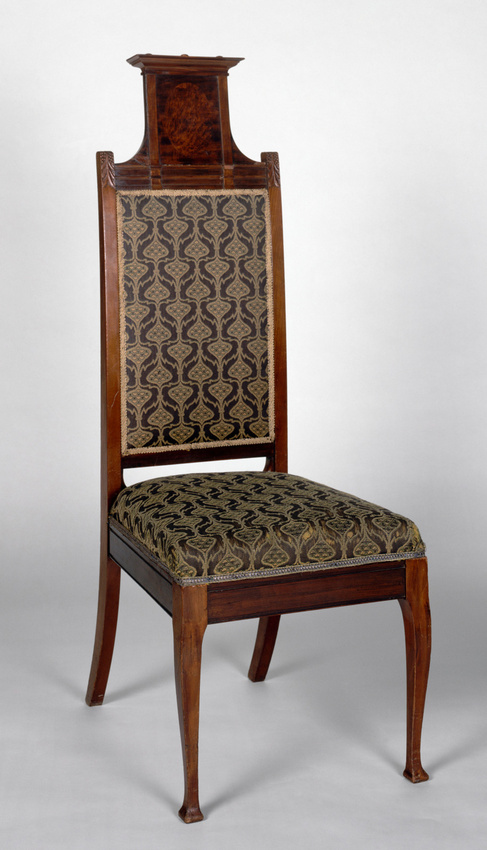Chaise
The London-born architect and designer, Arthur H. Mackmurdo, started his career in the workshop of the architect James Brooks. He soon attended the lectures given by the writer and theorist, John Ruskin, who proved a decisive figure. Indeed, Ruskin gave architectural supremacy to the Gothic style and advocated honesty in craftsmanship as an aesthetic and moral rule. For him, ornamental motifs had to be natural, a strongly stylised form of nature. Similarly, he thought that art must have a social dimension, modelled on the medieval guilds and craft communities. So Mackmurdo, encouraged in this path by William Morris, set up the Century Guild in 1884, bringing together painters, sculptors, enamellers and goldsmiths.
The objects they made, as this dining room chair shows, took a radically new approach to simple forms, with severe lines softened by the use of plant or organic motifs, as on the upholstery chosen here. A few carved patterns and the upper part of the back rest add a faint touch of fantasy to a rigorously designed piece of furniture. This model, presented by Mackmurdo at the International Exhibition in Liverpool in 1886, was manufactured by the Manchester firm of E. Goodhall & Co., which produced many of the Century Guild's designs.


